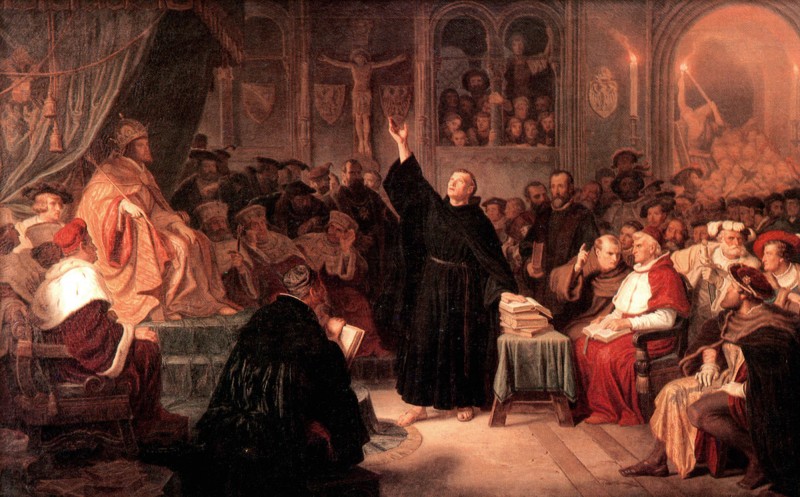
In the world of Christianity, two major branches have emerged: Roman Catholicism and Protestantism. These two denominations have distinct beliefs, practices, and histories, which have often led to theological and cultural differences. Understanding the disparities between Roman Catholic and Protestant faiths is essential for anyone seeking a deeper comprehension of the Christian religion. In this article, we will explore the significant contrasts between these two branches and gain insights into their origins, key doctrines, worship practices, and more.
I. Historical Background
A. Roman Catholicism
Roman Catholicism traces its roots back to the early Christian church, with its foundation attributed to Jesus Christ and the Apostle Peter. The establishment of the Vatican City in Rome as the central seat of the Roman Catholic Church solidified its authority and influence over the centuries.
B. Protestantism
Protestantism, on the other hand, originated in the 16th century as a result of the Protestant Reformation. Figures like Martin Luther, John Calvin, and others challenged certain teachings and practices of the Roman Catholic Church, leading to a significant split within Christianity.
II. Beliefs and Doctrines
A. Roman Catholicism
Roman Catholics believe in the authority of the Pope and the Magisterium, viewing the Pope as the supreme spiritual leader on Earth. They emphasize the sacraments, including Baptism, Holy Communion, and Confession, as essential channels of divine grace.
B. Protestantism
Protestants reject the Pope's authority and emphasize the primacy of the Bible as the ultimate source of spiritual guidance. They uphold the belief in justification by faith alone and the priesthood of all believers.
III. Worship Practices
A. Roman Catholicism
Roman Catholic worship is characterized by liturgical rituals, including the Mass, Eucharistic adoration, and veneration of saints and relics. Cathedrals and churches often feature elaborate decorations and artwork, contributing to the overall sense of reverence.
B. Protestantism
Protestant worship services are generally simpler and less formal, with an emphasis on preaching and communal singing. Many Protestant denominations do not venerate saints or use elaborate rituals in their worship.
IV. View on the Virgin Mary
A. Roman Catholicism
Roman Catholics hold a high regard for the Virgin Mary, viewing her as the Mother of God and the intercessor between humanity and Christ. Devotion to Mary is an essential aspect of Roman Catholic piety.
B. Protestantism
Protestants, while acknowledging Mary's role in history, do not grant her the same level of veneration as Roman Catholics. They believe in direct access to Jesus Christ for prayers and do not seek intercession through Mary or other saints.
V. Ecclesiastical Structure
A. Roman Catholicism
The Roman Catholic Church has a hierarchical structure, with the Pope at the top, followed by cardinals, bishops, and priests. This centralized authority governs various aspects of faith and practice.
B. Protestantism
Protestant denominations vary in their organizational structures, but many adhere to a more decentralized system. Local churches often have more autonomy, and decisions are made collectively by the congregation or church leaders.
VI. The Role of Tradition
A. Roman Catholicism
Roman Catholics place significant importance on Sacred Tradition, which includes teachings not explicitly found in the Bible. These traditions, alongside Scripture, form the basis of Roman Catholic doctrine.
B. Protestantism
Protestants emphasize the principle of Sola Scriptura, asserting that the Bible alone contains all necessary teachings for faith and practice. They do not consider extra-biblical traditions as authoritative.
VII. Attitude Toward Salvation
A. Roman Catholicism
Roman Catholics believe in a cooperative view of salvation, where faith and good works are both essential for attaining salvation.
B. Protestantism
Protestants adhere to the belief in salvation by faith alone, emphasizing that human efforts or good works do not contribute to one's justification before God.
VIII. Global Distribution
A. Roman Catholicism
Roman Catholicism has a global presence, with the highest number of adherents in Latin America, Europe, and the Philippines.
B. Protestantism
Protestantism is widespread, with significant numbers in North America, Europe, Africa, and parts of Asia.
IX. Sacraments
A. Roman Catholicism
The Roman Catholic Church recognizes seven sacraments: Baptism, Confirmation, Eucharist, Reconciliation, Anointing of the Sick, Holy Orders, and Matrimony.
B. Protestantism
Protestants generally recognize two sacraments: Baptism and Communion, also known as the Lord's Supper or the Eucharist. Roman Catholicism and Protestantism represent two major branches of Christianity with distinct theological, historical, and cultural differences. While Roman Catholicism places a strong emphasis on the authority of the Pope, tradition, and sacraments, Protestantism prioritizes the primacy of the Bible, salvation by faith alone, and the priesthood of all believers. Understanding these differences can foster greater respect and dialogue between followers of these two denominations, promoting a more comprehensive understanding of the Christian faith.
Into the Third Dimension: My Dear Kuttichathan and the Birth of India's 3D Cinema
These IT Jobs Are Safe from Layoffs: Ensuring Career Stability in a Dynamic Industry